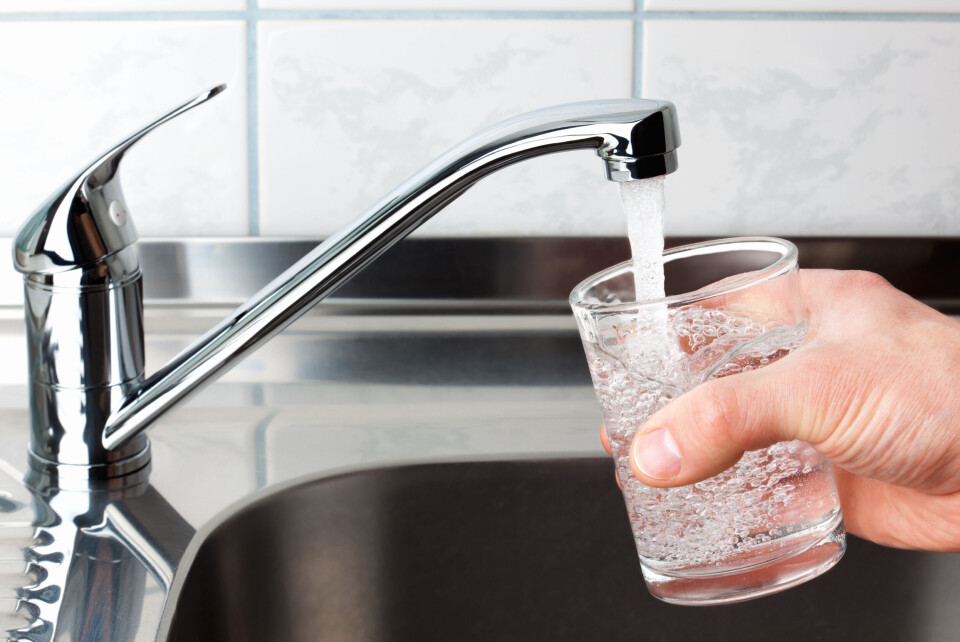-
Britons are the largest foreign community of second-home owners in Nouvelle Aquitaine
See which other departments in the region are popular with British nationals
-
Travellers risk extra costs under new Eurotunnel ticket rule
Some fare options are less flexible and less forgiving of lateness
-
May will be difficult month for train travel in France, warns minister
Two major train unions are threatening to strike and are ‘not willing to negotiate’, he says
Traces of banned pesticide found in French tap water
France’s food safety agency said a third of samples taken contained byproducts of the banned pesticide chlorothalonil. Paris and west France among affected areas

A third of tap water samples taken in France were contaminated with traces of a banned pesticide, according to a new report.
The study revealed one-in-three samples taken had high levels of metabolites from chlorothalonil, a pesticide that has been prohibited in Europe since 2019.
Before it was banned, the pesticide (also known as R471811) had been in use since 1970, and sold by the agrichemical company Syngenta. Fears over tap water contamination began to grow among water service managers several months ago.
The study - carried out by Anses, France’s food safety agency - saw samples taken from surface and underground water.
The metabolite could not be ‘seen’ until recently, as the laboratories tasked with the job have only just become able to test for it.
In January 2022, Anses classed R471811 as “pertinent” (meaning “potentially problematic”).
The pesticide’s metabolites, which are byproducts of its breaking down, must therefore meet the same regulatory thresholds as its ‘mother molecule’.
This is considered to be a probable carcinogen by European health authorities and was found to have caused liver tumours in experiments on lab mice.
There is no suggestion that the levels of metabolites in water in France could be dangerous, but the results do show levels above the acceptable, low threshold.
Anses suggests that around 34% of water in France could be non-compliant with regulations, although this figure is only an estimate based on agency samples. The pesticide is not yet tested as standard by regional health agencies, so it is not easy to determine exact levels.
One manager of a major public operator, who wanted to remain anonymous, told Le Monde: “I’m convinced that more than half the French population is affected.”
Read also: 12 million people in France have drunk pesticide-contaminated water
Paris is among the worst affected areas
The report also shows that highly-populated areas are worse affected, including Paris and the surrounding areas.
Regional water union Le Syndicat des eaux d’Ile-de-France (Sedif), which supplies four million people, has confirmed that around three million of them receive water with levels of R471811 that are four to five times higher than regulation allows.
Sylvie Thibert, risk manager at Sedif, said: “Surface water, which makes up 97% of our resources, of the Seine, Marne, and Oise, are all contaminated. Of our three production plants, that of Méry-sur-Oise has two lines of treatment, one conventional, the other using membranes.
“Only this last one allows us to bring back the water that we supply that is under regulation quality.”
The west of France is also affected.
Mickaël Derangeon, vice-president of Loire-Atlantique public water service Atlantic’Eau, said: “We have been studying this molecule since January and we have found it pretty much everywhere.”
Fixing the problem
Anses has said that tap water in France has never gone over the ‘fixed’ threshold of three micrograms per litre (which would mean it would no longer be considered safe to drink), and there are no required restrictions at the current levels.
However, the current levels are legally not allowed to remain for more than three years (renewable once). After six years, suppliers are required to bring the water back to acceptable levels to enable it to remain potable for clients.
Mr Derangeon said, however: “With chlorothalonil having been used for the past 50 years, it seems pretty certain that people have been drinking water that doesn’t conform to regulation for a while.”
The pesticide has been banned in France since 2019. Unfortunately, in Switzerland, where the same metabolites were found in 2010, suspending the use of the pesticide for several years did not reduce the levels found in the water, said Lausanne water manager, Pierre-Antoine Hildbrand.
Swiss studies even found that the metabolites could be present in bottled water, including Evian. Is it estimated that around 8% of people in Switzerland (700,000 people) receive tap water that does not conform, a study by Swiss health authorities found.
Switzerland was the first country to alert European authorities to the possible presence of the molecule in member states, including France.
Increased monitoring in France
In France, the Direction générale de la santé (DGS) has sought to reassure consumers, saying that its “health checking programme will gradually integrate, from 2023, chlorothalonil and its metabolites, in agreement with the rising ability of our labs [to test it]”.
Prime Minister Elisabeth Borne has been updated on the situation, said Le Monde. However, Emmanuel Macron’s recent announcement of his ‘plan eau’, which focused on providing water solutions in the face of worsening drought, did not make mention of pesticides.
Agriculture Minister Marc Fesneau has also recently announced that the use of S-metolachlor, another pesticide found in much groundwater across France, would be allowed to continue.
Related articles
Bottled or tap: How do you take your water in France?
Extra chlorine in tap water in France due to Covid-19
























